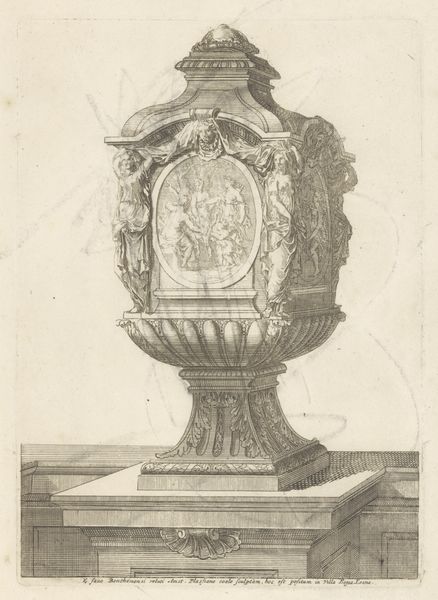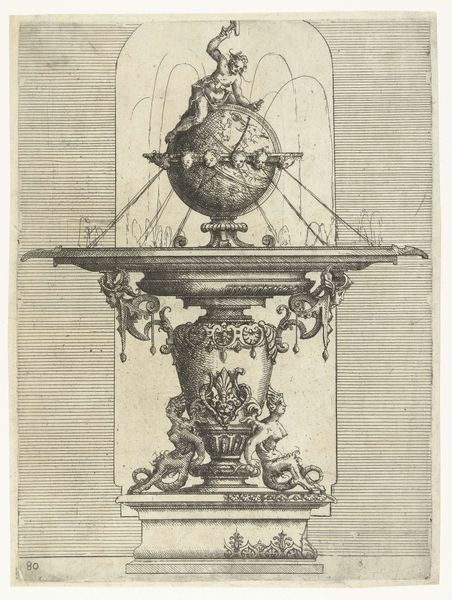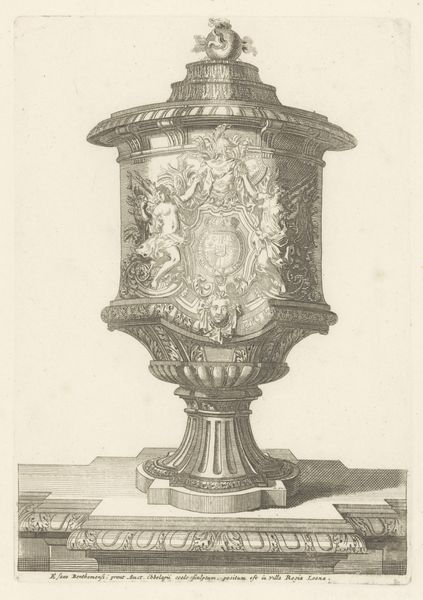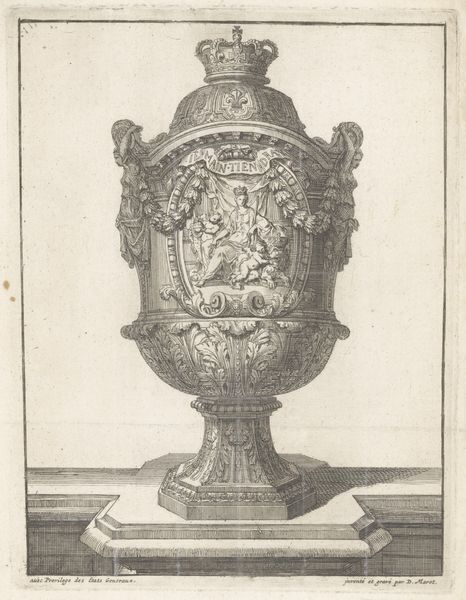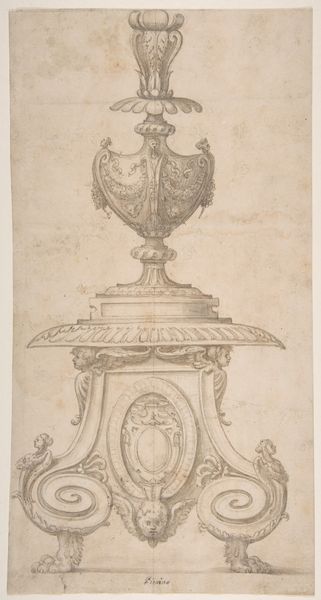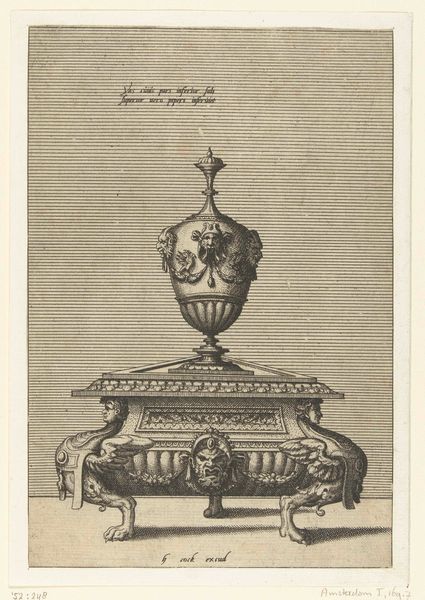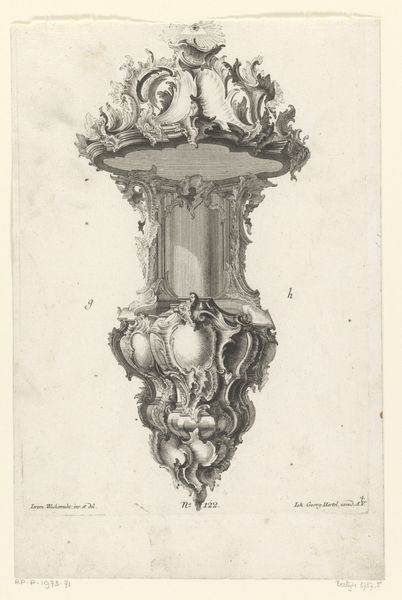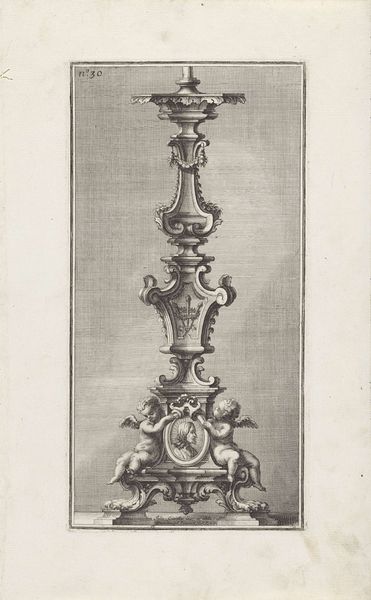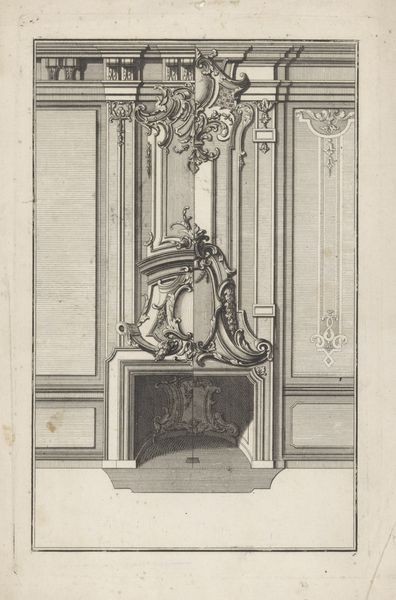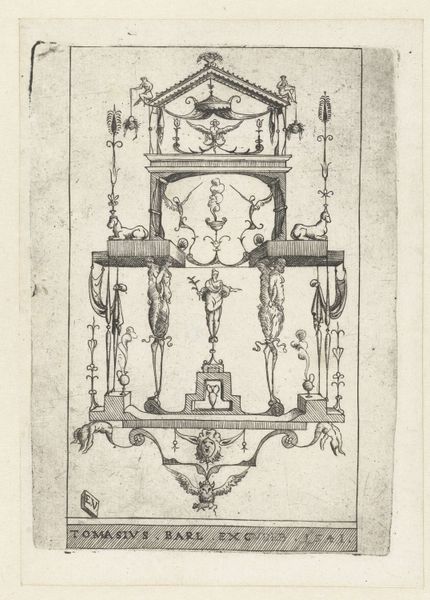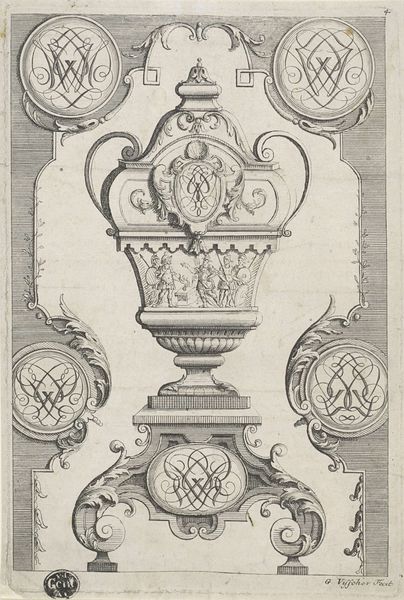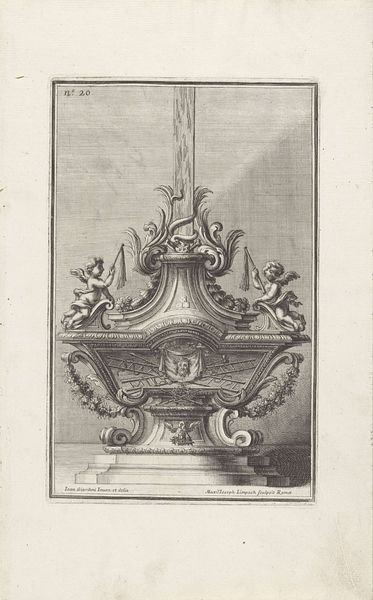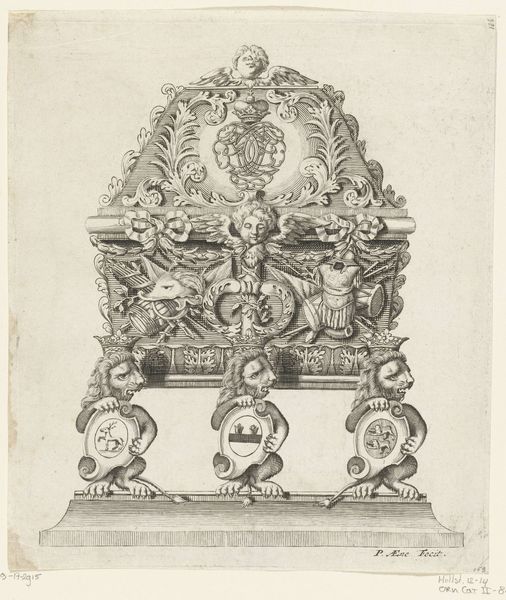
Dimensions: height 205 mm, width 144 mm, height 355 mm, width 270 mm
Copyright: Rijks Museum: Open Domain
Editor: Here we have “Vaas,” an engraving by P. Nicolet from 1771. It depicts a rather ornate vase in the Baroque style. It's fascinating how much detail the artist was able to achieve with just simple lines! What's your take on this work? Curator: My attention immediately goes to the process itself. The creation of such detail via engraving speaks volumes about the artisan’s labor. How was this print likely used and distributed at the time? Considering the level of detail, who was the likely audience? Editor: Good question! I imagine something like this would be a study piece for aspiring craftsmen? Curator: Precisely. Engravings like this were often circulated among workshops and patrons, influencing design and taste. This blurs the lines between “high art” and craft; this print isn't just art, it's a blueprint reflecting and shaping contemporary material culture. Look closely at the vase’s handles, adorned with vines and that rather grotesque mask. Editor: Yes, the details around the mask feel very intentional, like a maker showing off skills. What kind of impact do you think this had on the making of actual objects? Curator: These kinds of prints standardized certain aesthetic trends. Artisans referenced and reinterpreted details like the foliage or the shape of the vase, popularizing these forms among consumers, who saw similar design elements translated to various functional objects, and the prints themselves, which, remember, were also commodities. So what does that make us consider? Editor: I see now; the print becomes part of the cycle of production and consumption! This puts into perspective that something as seemingly simple as this engraving could play an active role in broader design. Curator: Exactly. Understanding its creation and function enriches our understanding of 18th-century material culture far beyond its aesthetic value.
Comments
No comments
Be the first to comment and join the conversation on the ultimate creative platform.
